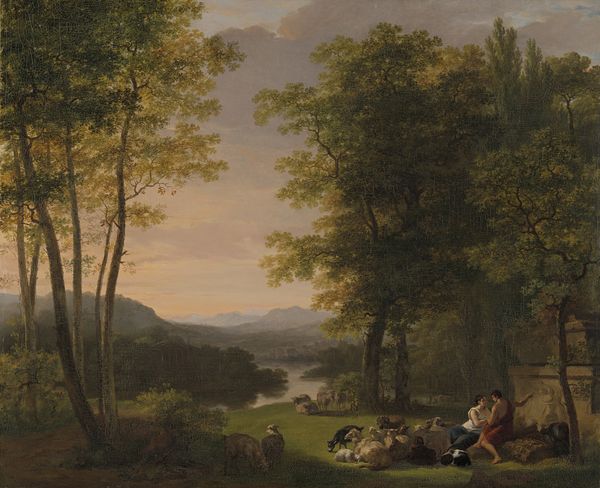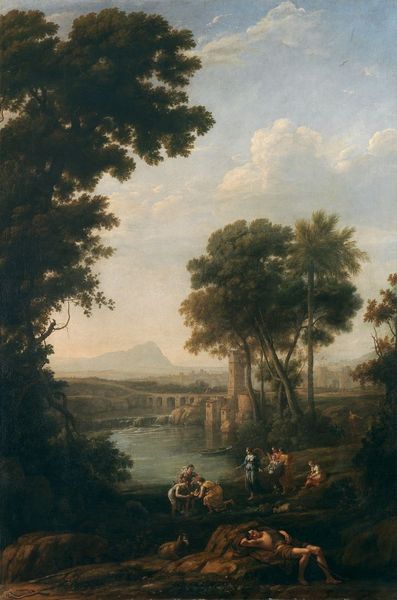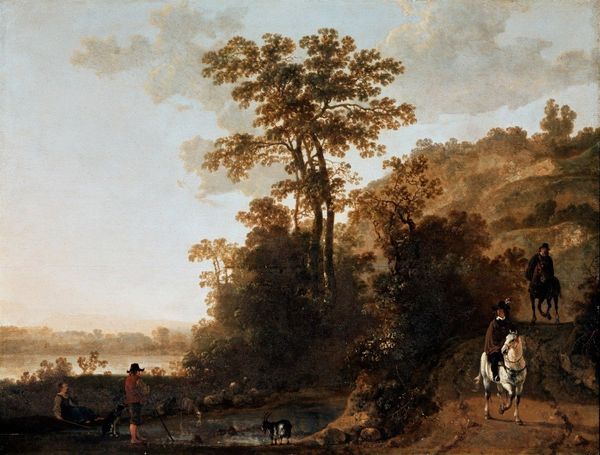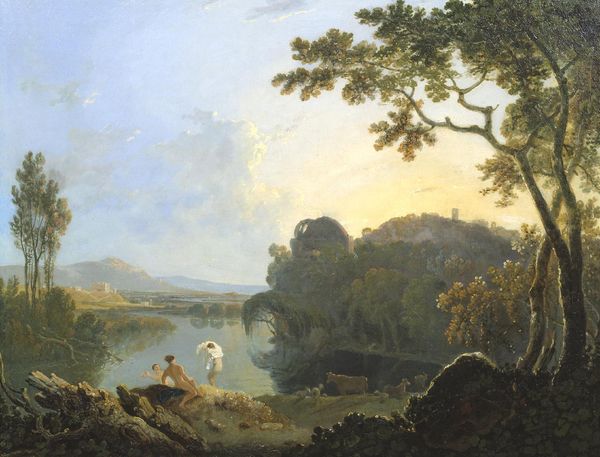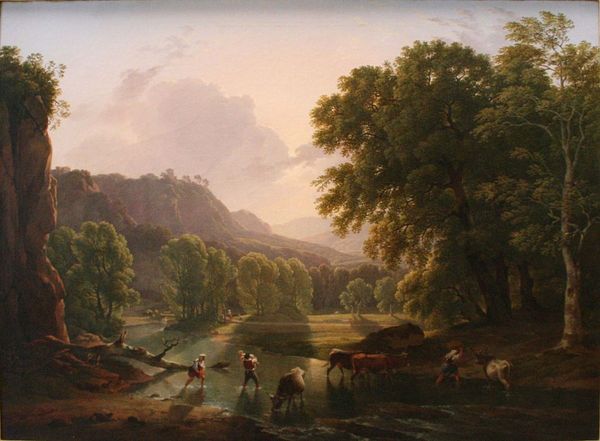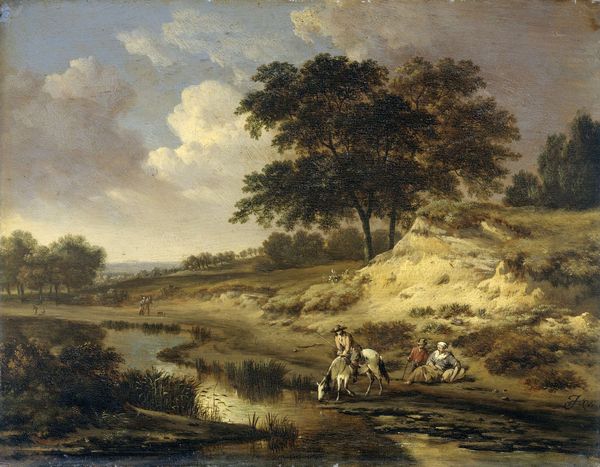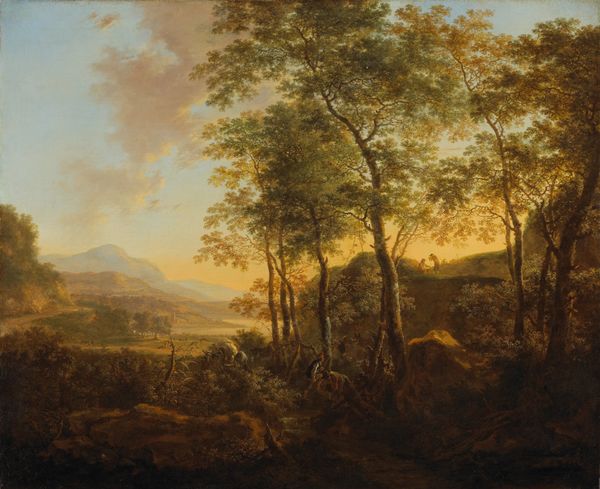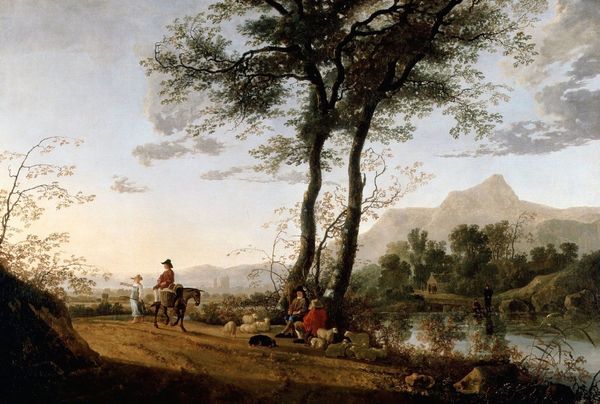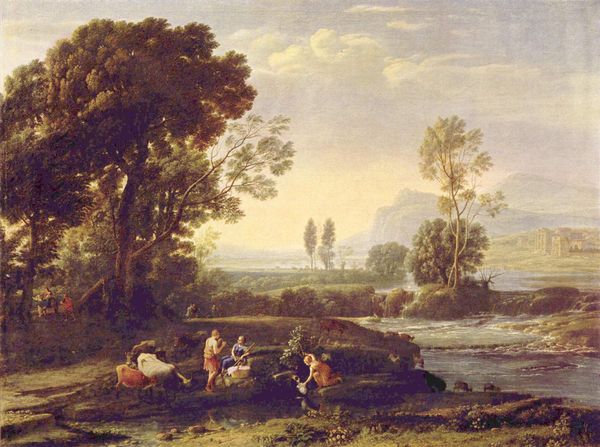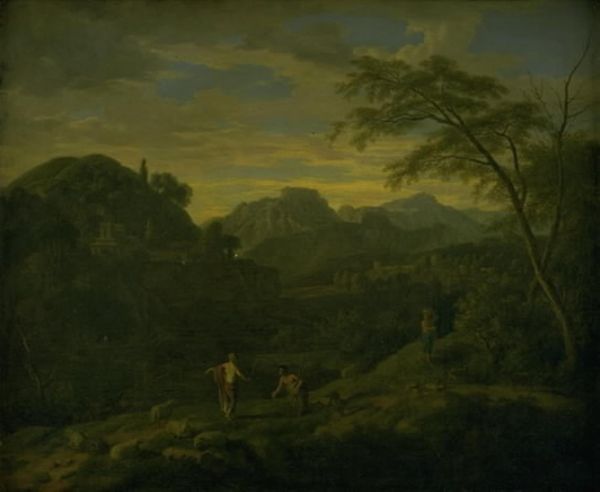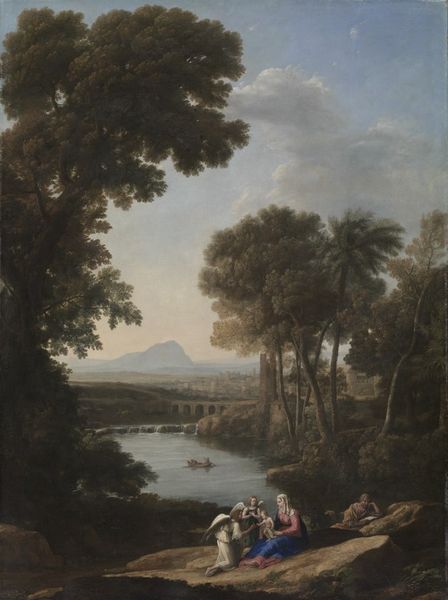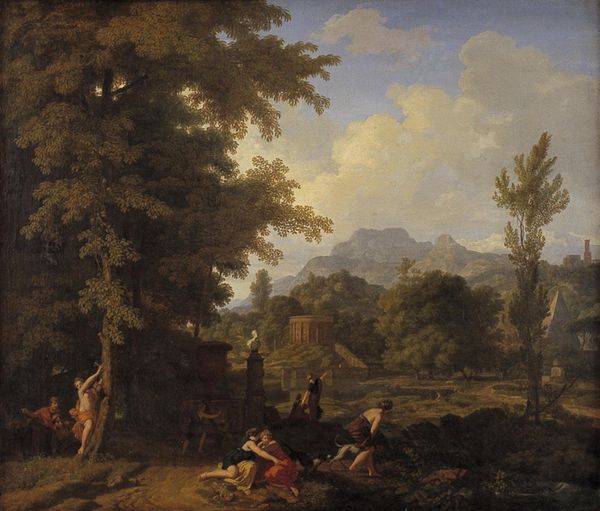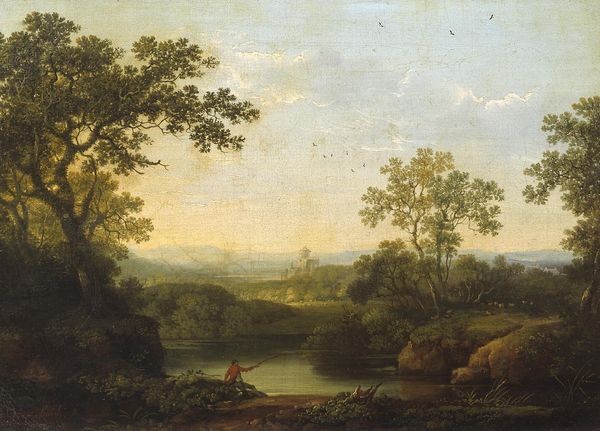
painting, oil-paint
#
baroque
#
dutch-golden-age
#
painting
#
caricature
#
oil-paint
#
landscape
#
figuration
#
orientalism
#
cityscape
#
genre-painting
#
realism
Copyright: Public domain
Curator: The tranquility radiating from this canvas is immediate. It’s as if the very air shimmers with warmth and a peaceful stillness. Editor: Agreed, and I think it's crucial to consider the socio-economic context when viewing such idyllic scenes. Aelbert Cuyp created this piece, "River Landscape with Horseman and Peasants," around 1660. While it captures a serene landscape, these scenes often functioned to reinforce a certain societal order. Curator: Ah, yes, that “Golden Age” of Dutch painting—not so golden for everyone, was it? Still, doesn't the composition pull you in? The way the light touches the distant mountains, creating such a dreamlike quality... Editor: Absolutely, and Cuyp’s skill is undeniable. Note how he uses light and shadow to create a hierarchy. The gentry on horseback are bathed in sunlight, while the peasants working are more muted. This isn’t just a landscape; it's a statement about social stratification. It’s an idealized, and perhaps romanticized, view of rural life. Curator: But, is that so different from any artist grappling with their present? He sees beauty and interprets, layers in those details of social existence—that hierarchy. I think there is beauty in this composition. I’m almost willing to close my eyes and swear I could smell the damp earth! Editor: And yet that beauty comes at the cost of erasure. The labor is present, certainly, but minimized, aestheticized. Consider who this art was for. The wealthy merchant class, eager to see their prosperity reflected back at them in art, perhaps even used to obscure harsher realities. These kinds of paintings weren’t cheap! Curator: Which makes you wonder what conversations *they* had when looking at this work. I'm still snagged on the painterly gesture itself – Cuyp’s touch. Look at those clouds, almost breathing. How do you reconcile beauty and the underlying issues that fuel creation? Editor: It’s the constant tension, isn’t it? Recognizing beauty while critically examining the power structures it upholds. A painting, like this one in the National Gallery in London, becomes a site of dialogue, between past and present, representation and reality. Curator: A place where art history speaks so profoundly, reminding us to see both the light and the shadows within a single frame.
Comments
No comments
Be the first to comment and join the conversation on the ultimate creative platform.
